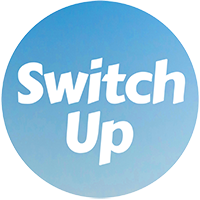Abstract:
The article addresses the common tendency among tech workers to dive into coding side projects without first validating whether there's actual demand for their ideas, highlighting how the comfort and clarity of building can mask the risks of wasted time, legal complications with employers, and personal burnout. Drawing from personal experiences and industry examples, the author explains that coding feels like progress, but often leads to the sunk cost trap—devoting nights and weekends to projects that ultimately lack an audience. The article presents "invisible MVPs"—such as fake door pages, concierge services, and Wizard of Oz tests—as practical, no-code methods for testing market interest quickly and safely before investing significant effort or risking job security, referencing notable successes like Dropbox, Buffer, and Zappos that began this way. The author shares specific routines for running these experiments, including setting clear metrics upfront, respecting privacy via GDPR-compliant tools, and collecting data only from genuine potential users, while also emphasizing the importance of honest self-assessment and clear quitting criteria to avoid rationalizing weak results. Through anecdotes and advice, the article demonstrates how these low-cost, fast validation techniques help tech workers protect their energy, avoid legal pitfalls, and focus only on projects with real traction, ultimately encouraging a disciplined, minimalistic approach to side projects that prioritizes learning and well-being over the urge to code.
Every tech worker knows the rush that hits when a new idea pops up. The pull to open a code editor and start typing is almost magnetic. Watching each line give shape to a project feels reassuring. Yet this comfort can hide a bigger risk: spending nights and weekends on something that never finds an audience. Building feels clear and safe, while market research looks like walking in fog.
There is also the legal side. For staff in tech with strict contracts, side projects may come with headaches. The line between your idea and your employer’s field can blur, and tracking where time or data go is tricky. That alone can slow down even the keenest builder.
So why do many of us still grab the editor first? And more important, how can we test if an idea matters without risking our job, free time or sleep? I will share the messy truth behind side projects, plus simple ways to check demand before a single line of code. Invisible MVPs can protect both energy and sanity. If you feel torn between the comfort of coding and the fear of wasting effort, you are not alone. There is a cleaner way.
Why tech workers stick to code first
Building is where it feels safe
When a fresh idea hits me, my reflex is to open the editor. That habit goes back to my first tiny projects, maybe because seeing lines appear and logic snap into place feels good. Big or small, each build session creates a clear sense of progress. Things compile, run, and look alive. It is almost addictive, this feeling. Yet that motion can trick me. It feels like forward movement, but it can mask the fact that nobody may care about the final result.
So why does coding pull so hard, sometimes at the cost of what matters? For many of us, code is the comfort zone. Debugging brings focus and joy. Feedback is instant: it works or it breaks. Structure is clear. Put that next to the messy task of talking with would-be users or checking if the market has room for the idea. If I do not watch myself, I go for the editor every time. Code offers clarity, while research feels like fog.
This comfort hides traps, more so in side projects. It is easy to spend weeks, even months, coding before asking if anyone wants the thing. The deeper you go, the harder it is to admit the idea may flop. That is the sunk cost pit, and I have been there. Effort feels like value, but sometimes you end up building only for yourself. With a full-time job, time and energy are limited, so blind investment hits harder.
Coding side projects can get messy for employees
If you work in tech, and even more in Europe, side coding is not only creative fun. It can be a legal minefield. Many contracts say anything you build, even at home on your own laptop, may belong to the company. Imagine spending your nights on a bright idea, then learning the firm owns it thanks to a small clause. That kills motivation fast.
Ownership is only one risk. The border between your project and the company space can blur fast. Use the same account, or build something close to your day job, and suddenly the idea sits in company land. I learned this early: use a fresh email, a fresh repo, a fresh everything.
There are also personal risks. Many countries limit working hours and watch for conflicts of interest. Push your side gig too hard and you might break those terms, even put the main job at risk. Protecting the idea also means protecting your paycheck. So, how can we test ideas without stepping into these traps?
Testing your idea before touching code
Invisible MVPs let you test demand the smart way
The pull to just build is strong. Yet you can learn if people want the idea before writing a single line. Enter the invisible MVP. To visitors it feels like a finished product, but behind the curtain you handle everything by hand. You simulate the experience, gather proof of demand, and do it fast. No tech risk, no code ownership drama, and almost no cost. Here are a few common versions of this zero code test.
- Fake door page. A simple site that explains the product and asks visitors to sign up even though nothing exists yet.
- Concierge MVP. You do the service by hand for the first users to see if they find value.
- Wizard of Oz. The interface looks automatic, but you run the tasks in the background with a spreadsheet.
Each option answers one key question: does anyone want this enough to sign up or pay?
Some well known companies began this way:
- Dropbox used a short video demo and grew a waitlist from 5,000 to 75,000 overnight.
- Buffer started with a landing page that gathered emails and price feedback, no code behind it.
- Zappos listed shoes online and fulfilled each order by hand before setting up warehouses.
These stories show how an invisible MVP can save months, even years, by proving demand before you burn time or cash on code. Why does this approach suit tech workers so well?
Why invisible MVPs just work for tech workers like us
If you dislike waste and want quick answers, invisible MVPs fit like a glove. For me, the fear of wasting precious evenings or risking my main job always lurks in the background. There is also this itch for more autonomy—being able to test an idea without asking anyone’s permission. They let you test new ideas without legal hoops, late night bugs, or threats to the day job. Because there is no code, you dodge those contract grey zones and avoid mixing company IP with your own. Your evenings stay free, not swallowed by a project no one needs.
You get a clear yes or no from real people in days, not months. If the idea flops, you lose only pocket change and a bit of pride, not a year of evenings or legal calm.
In my own tests, a fast landing page or a manual service showed me which ideas had real pull and which ones I only wished would work. The data told me where to invest energy. It feels good to guard my job, my weekends, and my sleep while still moving fast.
Running invisible MVPs
Launching a fake door test step by step
Once I pick an idea to test, I follow a simple routine:
- Write what I need to learn. Example: will 10 percent of visitors give me their email?
- Define one clear goal, such as 20 signups from 200 visitors.
- Note the hypothesis: if I hit that goal, I keep going.
- Having numbers up front stops me from fooling myself later.
Clear targets force you to judge the test by demand, not by the look of the page. They keep you from shifting the goalposts after results come in, a lesson I learned after believing my own optimism too often.
After the prep, the landing page is simple. I use Typeform or Google Forms because they are quick and privacy friendly. A form can be live in minutes. In the copy I talk like the customer, not like a techie. I spell out the offer, the benefit, and keep it short. Users sign up when they see their own problem and a clear fix, not when a page is stuffed with buzzwords.
Once the page is live, measurement is the real job. Track visitors, button clicks, and signups from day one. Even with 100 visitors you will see if there is real curiosity or just polite clicks. A low rate is often the fastest way to save your evenings for something better.
And do not skip privacy. Use GDPR friendly tools. Add a short notice near the form, for example, “We only use your email for updates about this product.” Ask only what you need, usually just an email. Respect builds trust and keeps you legal.
Manual MVPs follow the same basic logic, but the work gets even more hands on.
Testing ideas manually with a concierge MVP
Sometimes the best check is to do the work yourself. If your idea is a service like meal plans, CV review, or business advice, start by helping a few people directly. Post in a relevant group, offer a simple booking form, and serve them yourself. You will see fast if anyone bites and where the process feels rough.
Back in my Paris/Beijing days, I once tested a new service for our cross-border e-commerce platform by manually emailing every early user—messy, but it showed me what actually worked. I keep always a small notebook for these experiments, jotting down common requests, the time each task needs, and where I slow down. These raw notes help later if I automate or scale, and sometimes they show the idea is not worth it, which is still good news before any code.
My sharpest feedback came from these manual runs. I saw how much effort people expected, what they loved, and which requests were odd. Food on the Table, for instance, grew by hand crafting meal plans at first. Watching real reactions shows the rough edges before you spend big.
And always, privacy matters here too. Only ask for what is necessary, let people know how and why you use it, and store it somewhere safe. Simple steps like this keep users’ trust and cover you legally.
No code tools make every bit of this even faster.
Picking the right no code tools for privacy and speed
Tools such as Typeform, Google Forms or Jotform let you launch feedback pages in minutes. I like Typeform and Google Forms for their speed and clean look, plus the option to keep data on EU servers. When I need complex logic, I switch to Jotform. Each tool lets you view responses, export data, and adjust the test on the fly.
Still, check privacy features before picking a tool. Make sure users can access or delete their data and know where it is stored, ideally on EU servers.
My quick checklist:
- GDPR compliance and clear privacy controls
- Option for users to erase or export their info
- Clear policy on data location
With the right tool and process you have a quick, safe and low stress way to see if the idea has a shot, while staying clear of legal trouble.
Making sense of early signals from your invisible MVP
What real traction looks like
In early tests, clicks and views are not equal. Real commitment shows when someone gives something up, such as an email, a slice of time, or best of all, money. I rank the signals like this:
- Prepayments or preorders. Gold, the person is ready to buy.
- Detailed signups where people explain why they care.
- Waitlist entries that include role or the problem they face.
- Simple clicks or page views, which are mostly noise.
My background in physics taught me to trust numbers over gut feeling, especially when early signals are ambiguous. Conversion rates give a quick benchmark. Actions that need a small commitment, such as sharing an email, say far more than a casual click.
Still, watch for wishful thinking. When more than 10-20% of visitors sign up or try to pay, it is a strong sign. Under 5% usually means the pitch, or even the idea, is missing the mark. The truth can sting, but simple math saves you from chasing false hope.
Stopping yourself from seeing signals that aren’t there
When testing, wishful thinking sneaks in fast. A tiny sample or a kind comment from a friend can make you think you have a hit. I now write my success rule before I show the MVP to anyone. For example: only move forward if 20 people sign up from 200 visits. This rule often saves me from weeks of waste.
Also be sure the data is real, not padded by friendly faces. Common traps:
- Asking friends or colleagues; they tend to encourage, not give hard truth.
- Testing with too few people, leading to random results.
- Moving the goalposts after results come in, like thinking five signups is suddenly enough.
So I always give myself a simple rule: write down your numbers and criteria before, then don’t change them later to fit what you wish happened.
Real signals come from real users, not from your network or your own hopes. If results are fuzzy I repeat the test or pick a new channel. After real effort, if no one bites, I let the numbers guide me and move on. This honesty saves my time, energy and motivation. My checklist:
- Gather data only from genuine potential users
- Repeat or change channels if numbers are weak
- When several honest tries show no traction, trust the numbers and let it go
Stay safe and legal with your invisible MVP
Non-code validation keeps employer risk low
Invisible MVPs help you dodge many legal headaches. Stay away from code and test on your own time, with your own laptop and accounts, and most employer IP rules do not apply. The research, landing copy and list of emails remain yours. Good separation is key; I keep everything on personal devices and never use company logins. If the boss ever asks, clear records prove the project was independent.
Keep a simple log for peace of mind
Keep a basic log of what you did, when, and on which devices or accounts. If ownership is questioned, this small habit shows the project was separate and under your control.
GDPR basics made simple for quick experiments
Each time you gather emails or feedback, privacy rules apply. Add a short notice on the form. Tell people what you collect, why you need it, and how long you will keep it. Ask only what you need, often only an email. Pick tools with built in privacy features.
Choose tools that handle privacy for you
Most popular no code platforms make this easy. I stick to forms that offer GDPR compliance and EU hosting, so user data stays protected. With the right tool, it is also easy for users to access or delete their info if they ask. This way, you stay legal, and you build trust from the very start.
Deciding when to build or to walk away
Using frameworks to stay rational
Early positive signals can sweep you away. To stay grounded I set targets before the test, such as 50 signups in two weeks or 10 people ready to pay. With clear numbers I avoid trusting only my gut. Hitting the goal means automate and maybe start real code. If the result is far off I read feedback; sometimes a small tweak can save the idea. When numbers are far below the mark and feedback is cold, I walk away.
Letting go of an idea stings, but the relief of reclaiming my evenings is real. Sometimes I close the test, eat a pain au chocolat, and feel the stress melt away. This discipline protects my energy. I use simple frameworks like the Lean Startup loop: build, measure, learn. First write the hypothesis, success metric and stop rule. The Y Combinator habit of checking user action over praise helps too. Harvard’s kill criteria says the same: set the rule early and follow it so a zombie project does not drain months. My pattern:
- Write the success metric, for example 20 signups from 200 visitors
- Note what makes you quit, like less than 5 signups or no clear problem stated
- Review, do not rationalize. If you meet the numbers, celebrate. If not, study the feedback, then move on.
Knowing when to pivot or move on
Sometimes results are close but not enough. Look at feedback; maybe the pitch is unclear or the problem is not urgent. A small pivot can help. If after tweaks you are still far from the goal, let the idea go. There are always more ideas, and keeping evenings free beats chasing a stubborn one.
The choice to pivot or quit is not weakness. It is a superpower. Time and focus are more precious than any single project. Each clear no makes room for a better yes later.
Keeping your energy and focus for the next opportunity
Minimalism in testing keeps you sharp
Invisible MVPs keep my motivation high. By testing fast and cheap I get answers in days. When an idea flops I still sleep well, and I am one step closer to a winner. My friends joke: fail fast, fail cheap, save weekends for fun. Each test teaches me, and I dig deeper only when the numbers say it is worth it.
Learning to quit or pivot early keeps my love for side projects alive. I spend energy on problems that matter and avoid burnout or zombie ideas. The real win is not always a launch, but keeping focus and sanity ready for the right idea.
Every tech worker feels the pull to jump straight into code, but these invisible MVP habits have reshaped how I work and live. After years juggling projects from Paris to Beijing, I now test ideas in my garden or at the workbench before I plant or build anything big. Whether it is a new tool for my science company or a raised bed for tomatoes, I start small, watch the signals, and only invest when the signs are good. This way, I keep always my energy for what matters—at work, at home, and in every side adventure.














